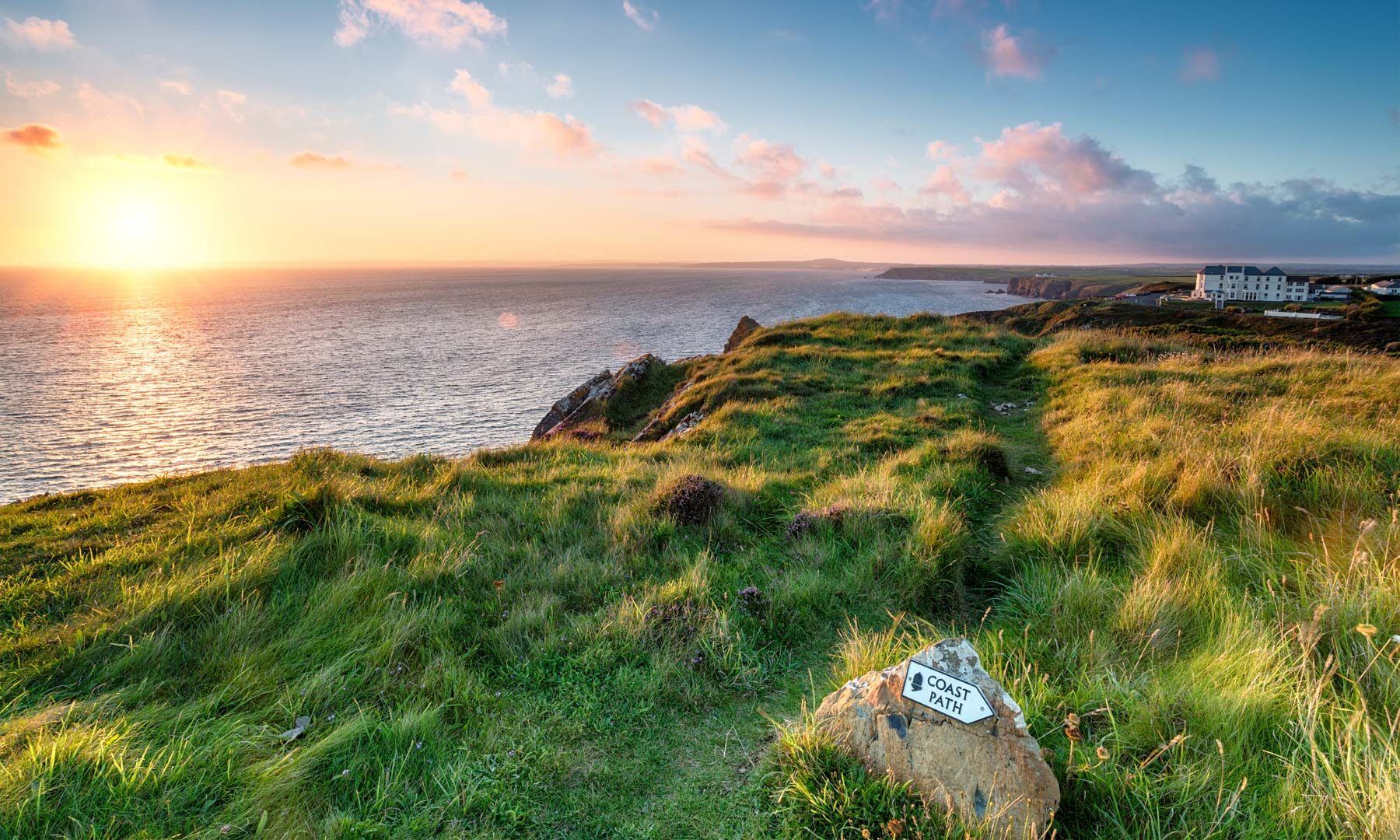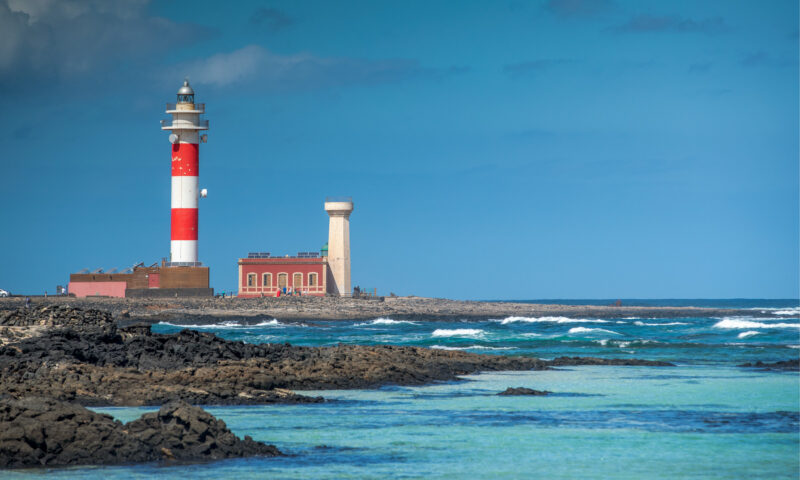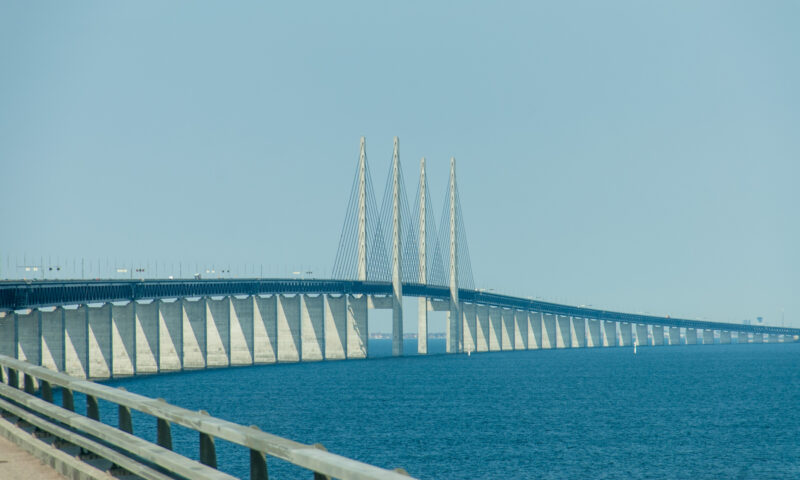Stretching for a mammoth 630 miles through Dorset, Devon, Cornwall, and Somerset, the South West Coast Path is one of the most epic walking trails in the UK.
This is the longest “National Trail” in the country, and I can tell you from first-hand experience that it’s also one of the toughest. This is a walk of ups and downs – literally – and if you hike the entire route, you’ll have ascended the equivalent height of Everest over four times.
Conquer those cliffside ascents, and you’ll discover gorgeous coastal scenery, quaint fishing villages, and a friendly community of hikers who always stop for a quick chat on the trail. If you’re planning on tackling this beloved walking trail, then keep reading, as I go over my guide to walking the South West Coast Path.
Disclaimer: This post may contain affiliate links. If you make a purchase or booking through one of our links we may earn a small commission (don’t worry, it’s at no extra cost to you).
South West Coast Path Hiking Guide
How long does it take to hike the South West Coast Path?
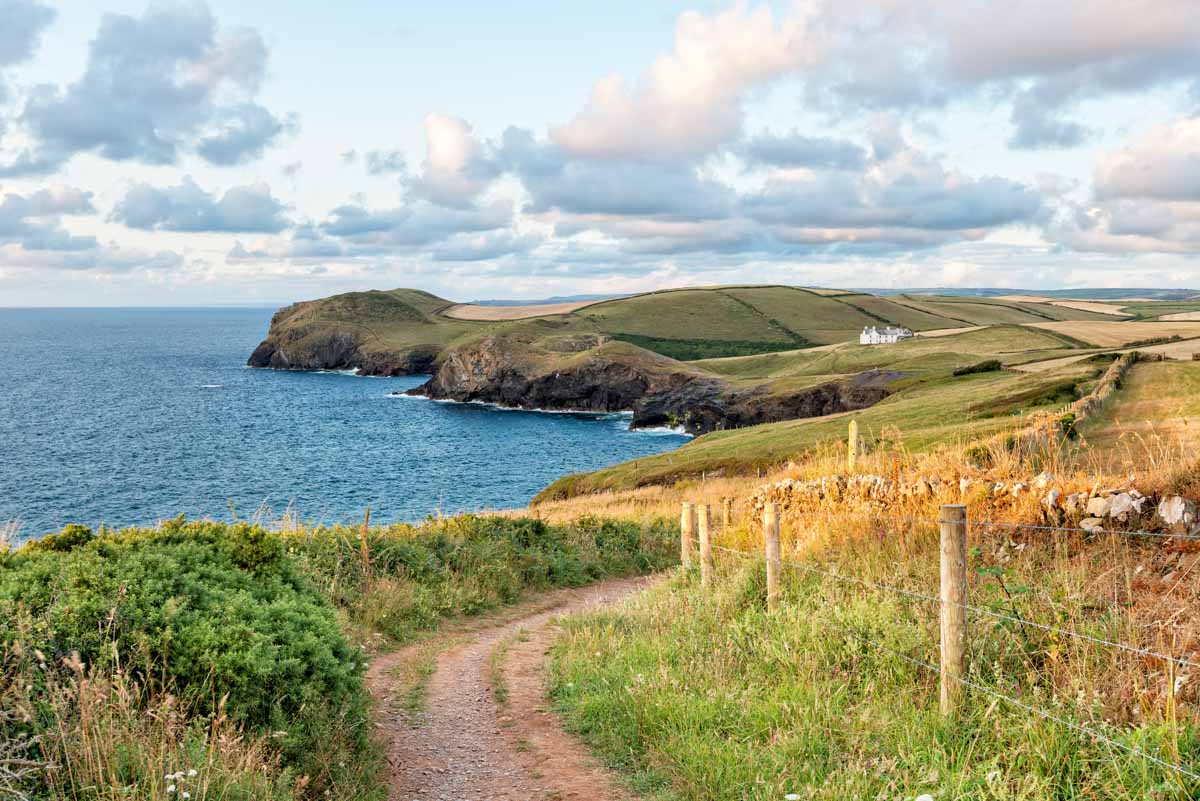
Britain’s longest, long-distance trail is a roller coaster ride stretching for 630 miles along the southwest coast.
It’s a long way, and you should bear in mind that the 630 miles don’t include any detours you might need to take in order to reach your accommodation each night and any temporary detours avoiding obstacles or landslides (and it doesn’t include any of the times you might get lost!).
The South West Coast Path Association, which is responsible for the trail’s upkeep, has divided the route into a total of 52 stages. Each is of varying length, but technically, each stage can be completed in a day’s hike.
This means that a fit and experienced trail walker could complete the entire route in 52 days, plus any rest days (the fastest time is a speedy 10 days, 12 hours, and 6 minutes, which was set by an ultra-marathon runner!).
In reality, you’ll want to break the route up into shorter hiking days that are more enjoyable and less tiring. Indeed, you’ll meet very few people who are attempting the entire South West Coast Path in one go.
I tried and failed, getting about halfway around the route after two months of walking. The beauty of the South West Coast Path, though, is that you can take as long or as little time as you like, and you’ll meet many walkers slowly ticking off the path in stages over the course of years, decades, or even a lifetime.
The South West Coast Path is waymarked for the entire length, and you’ll be following the iconic “Acorn” (the symbol for all National Trails in the UK) as you make your way around. Several sections involve crossing tidal estuaries or taking ferries, so check tide times and ferry timetables before setting off each day.
Where does the South West Coast Path start/end?
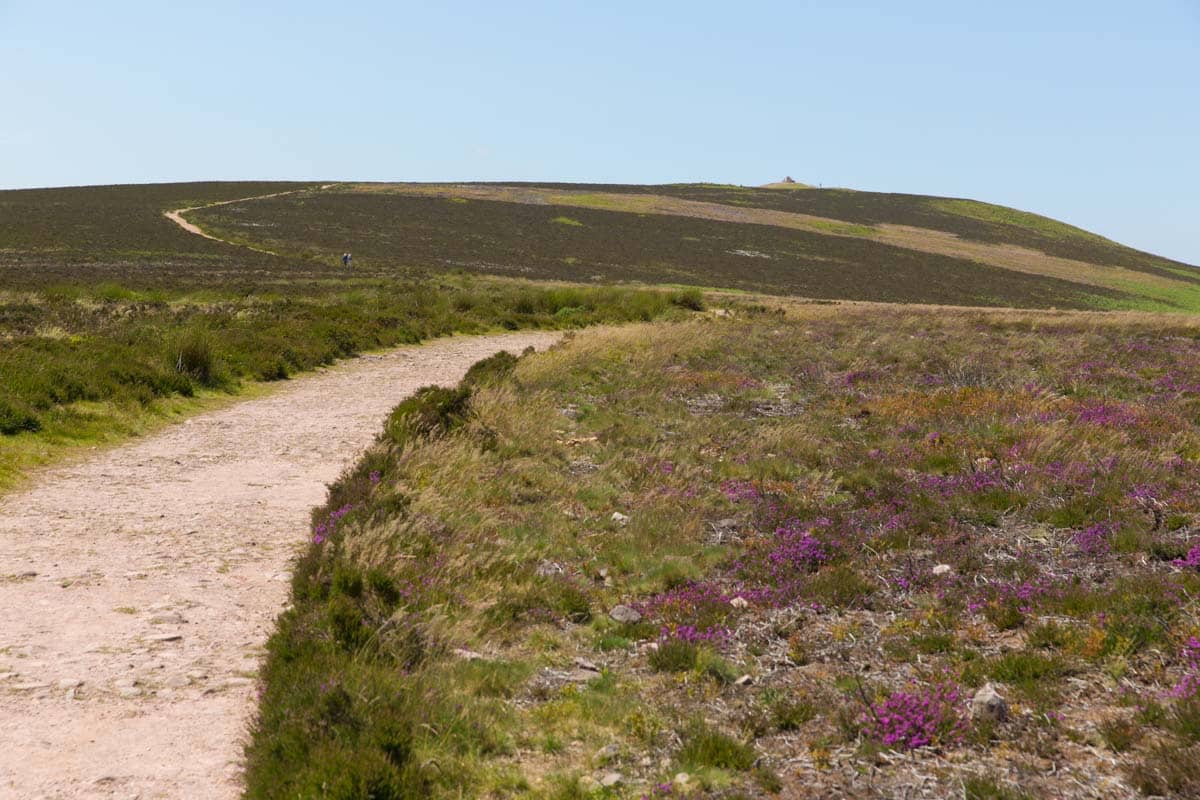
The trail officially starts (or ends) in Minehead, a seaside town on the northern coast of Somerset. There’s a large marker signifying the start of your hike, where you’ll spot countless hikers photographing the start or end of their journeys walking the South West Coast Path.
Minehead can be reached by bus from Taunton, which is on the Great Western Railway route from London. The hike will take you along the north coast of Somerset and west into Devon and then Cornwall.
After reaching Land’s End, the most southwesterly point in mainland Britain, you’ll round the tip of the Cornish peninsula and start hiking east. You’ll cross back into Devon, then continue into Dorset, where the South West Coast Path officially ends (or starts) in Poole Harbour, where you can connect to the national rail network after a well-earned break.
Technically, it doesn’t matter whether you start or end the hike in Poole or Minehead, but hikers will stick to hiking clockwise or anticlockwise once they’ve started. I started in Minehead and found the north coast exceptionally tough to begin with. The south coast is a bit smoother, so you might want to consider starting here if you’re still building up your fitness or just want an easier hike.
The Best Times for Walking the South West Coast Path
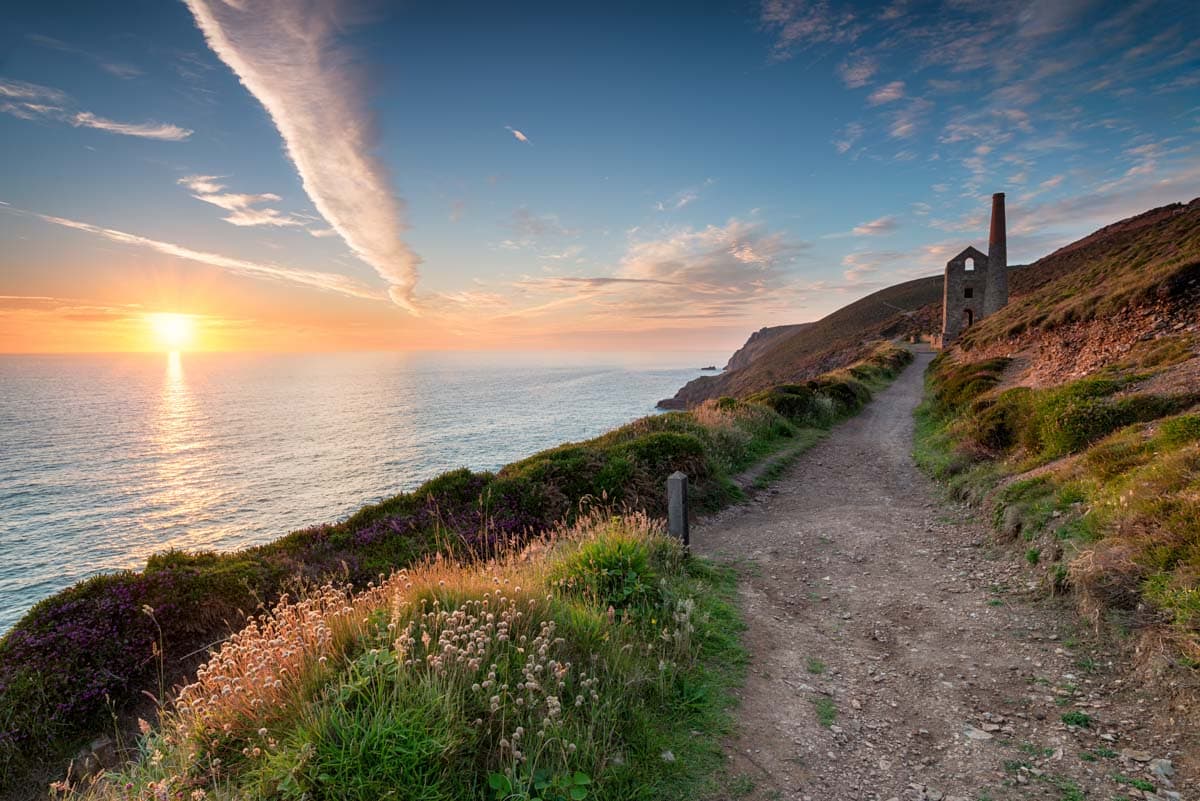
The hiking season never really ends on the South West Coast Path, and a crisp winter’s morning can be just as enjoyable a time to hike as a hot June afternoon. If you’re backpacking the route, though, you’ll want to begin after March when the days are longer and the campsites have reopened after their winter break.
April and May are ideal in terms of temperatures, while June, July, and August often see scorching hot weather that can be unbearably hot to hike in. The summer months are always the busiest, and in the most popular places, you’ll often have to endure queues on the path (especially in Cornwall).
The shoulder season, from September onwards, is much quieter, but the weather is less predictable. The southwest is typically sunnier than much of the rest of the United Kingdom, but still, you’ll always need to be well-prepared with waterproofs all year round.
Transportation
Hiking the South West Coast Path takes you to beautifully remote places, but the often rural nature of the trail can make transportation difficult in places.
This is particularly true on the northern coast, which has few train stations, while local bus connections can be temperamental (some villages only have one bus a day, for example!). However, on the northern coast, you can often make use of the Atlantic Coaster and Land’s End Coaster bus routes, which pick up and drop off hikers in many of the most popular seaside villages in Cornwall.
The southern coast is better connected by train. I often pick two towns on the train, jump off the train at the first, walk a section of the coast path, and then hop back on the train at the next town.
You can do the same with local buses too, and I met many hikers (with a larger budget than me!) who would take taxis to their starting point for the day or catch a taxi back home to their accommodation. If you’re using taxis, you’ll want to book them in advance, as drivers can be in high demand in rural areas.
Where to Stay
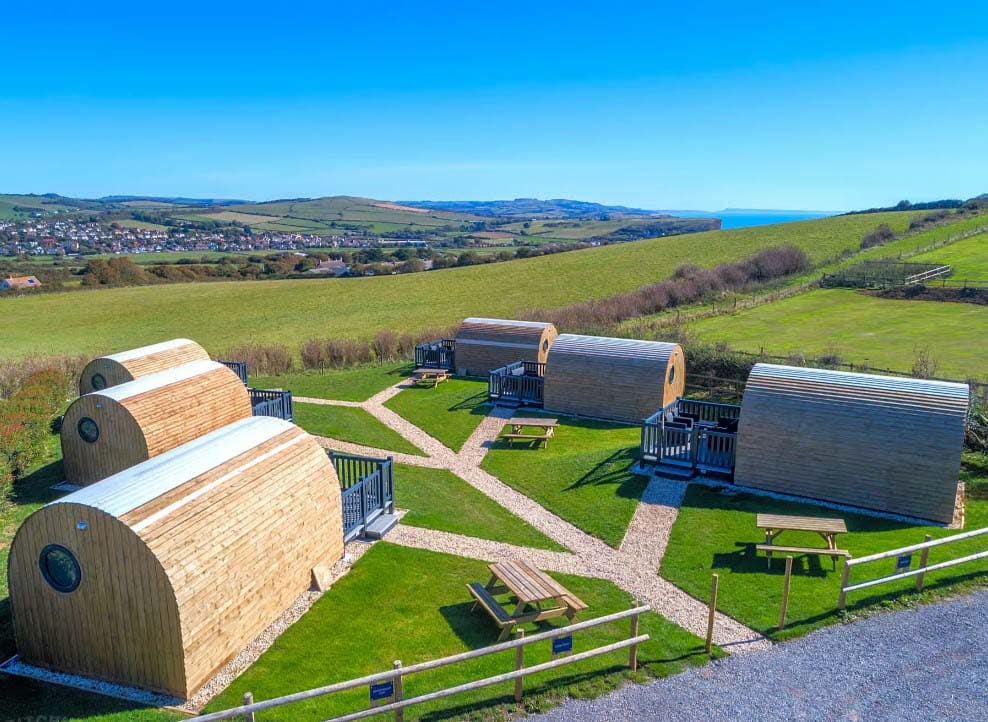
The traditional way to complete the South West Coast Path is by backpacking, but to do this, you’ll need to be fit and able to carry all your gear, or at the least, a day pack.
It’s illegal to wild camp in England, so you’ll need to stay in campsites or seek out the permission of landowners to camp their ground (which isn’t easy). The location of campsites will often dictate your walking route each day, and I found that in many stretches, there weren’t always campsites next to the trail, especially in more rural areas in North Devon. I’d recommend using the website Pitchup to find and book campsites close to the trail.
This meant that I’d often set up camp for a few days at a time in one campsite, and then use the local buses or trains to complete different sections. I also discovered (far too late) that a local company (Luggage Transfers) organizes baggage transfers during the summer months.
You book your transfer via the website or by phone, then leave your bags at the campsite or hotel’s reception after checking out. The company picks your bags up, and by the time you walk to the next campsite or hotel, your bags have already been delivered! It was a lifesaver.
Accommodation in the southwest is often overpriced in summer, but you’ll find one or two guesthouses and Airbnbs in most villages and plenty more choice in the larger towns. If you’re not on a budget, then this is the most comfortable way to hike, and again, you might want to set up base in a guesthouse for a few days and tick off a few stages without moving between accommodations every day.
What to pack for the South West Coast Path?

What you need to bring with you largely depends on how long you’re hiking for and where you’re planning to stay each night. Remember, the lighter your pack, the easier it’s going to be – particularly on those tough climbs!
If you’re not camping (or if you make use of the baggage transfer service), then you can hike with a lighter day pack. I’d recommend taking at least two liters of water, and it’s good to keep your bottles topped up when you can. You’ll find plenty of cafes, restaurants, and shops where you can buy lunch and supplies.
A good pair of boots or walking shoes are a must, and a sturdy bag with a rain cover and waist and chest straps is ideal. You’ll want comfy walking socks and plenty of layers. In summer, you’ll need a wide-brimmed hat and sunscreen.
In winter, a wooly hat, scarf, gloves, warm jumpers, and a down jacket are necessary. I like to carry a pair of sunglasses all year round. A good head torch, a dry bag, and a power bank are recommended, and I’d suggest downloading the OS Maps App (or getting paper copies of these same OS Maps) for directions.
People either love or hate hiking poles, but I found they were incredibly helpful given the ups and downs on the South West Coast Path. They added that extra support I needed and stopped me from falling down loose scree slopes on many occasions. If you’re backpacking, you’ll need a good tent, sleeping bag, roll mat, cooking stove, and one or two changes of clothes.

